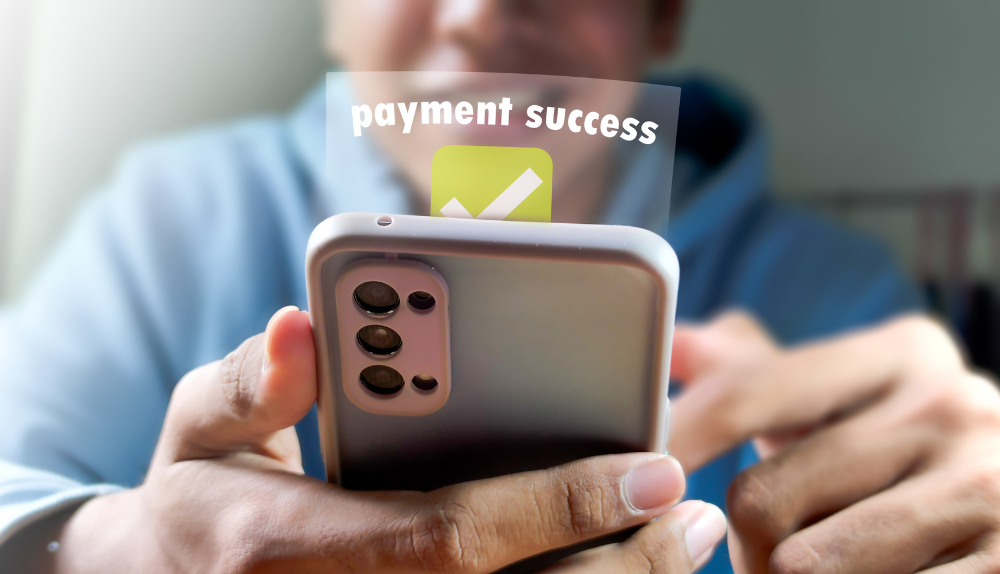
By max April 27, 2023
Have you ever bought a subscription to an OTT streaming platform or a music app? Or, did you ever pay a small tip to the Uber driver using online payment modes? Well, these are called micropayments. The definition of this payment method varies for companies. Some consider all transactions less than a dollar to be micropayment, while others have set a threshold of $5 and $10 for this.
Any small amount paid online for digital products and services is micropayment. The amount in these transactions is typically less than a dollar or a few cents. With eCommerce and fintech expanding at an exponential rate, micropayments have become a common way to conduct business. Not only is it convenient, but it’s the safest mode of transfer.
Google Ads is a perfect example of micropayments. Every YouTuber or blogger running a blog on Google can monetize their account and run commercial ads on their website will get a small percentage of the fee for every view or click. The blogger is, however, supposed to meet the threshold to get the amount credited to their account.
Let’s take a look at the meaning, purpose, and benefits of micropayments. Later, we will discuss the examples of micropayments.
What are Micropayments?
Introduced by Ted Nelson in the 1960s, the concept of micropayments started way before the World Wide Web was launched. Today, it has become a common practice to sell content online. You might wonder how micropayments are different from the transactions processed through credit/debit cards.

Well, traditional transactions do not require the buyer and seller to have an account on the digital platform where the payments are processed. In micropayments, both parties need an account on the system. The service provider is responsible for monitoring the entire process—collecting payment from the buyer and transferring it to the seller.
Google Play, AppStore, and PlayStore are all examples of micropayments. If you have noticed, creating an account on these apps requires you to enter your payment details. PayPal, for example, allows you to store money in digital wallets, which can then be used for making purchases online.
Likewise, AppStore and PlayStore allow users to buy paid apps, make in-app purchases, and process other transactions from the money stored in their wallets. It’s commonly referred to as the pay-as-you-go system.
While micropayments are considered highly effective and smart payment methods for online transactions, these come with a steeper transaction rate. It’s not the case for all platforms, but some companies, such as PayPal, charge a fixed transaction fee for every purchase made through this payment gateway. You can compare the features and charges of each payment processor to find the one that fits your requirements and budget. Note that micropayments do not always incur a transaction fee.
How Do Micropayments Work?
This transaction method has gained immense popularity in the fintech industry. Micropayments can be a one-time transaction or a recurring expense that’s deducted from the customers’ accounts at specific intervals. These can be pre-paid or paid during the sale. The main purpose of making these small payments online is to facilitate quick and free transactions, which would otherwise cost a lot if they were paid through traditional channels.
As mentioned before, micropayments may have varying definitions for each service provider, but one common thing in each payment method is that these amounts reflect only a fraction of the total cost paid to the service provider, hence the name.
The buyer will make a payment on the system, say Google PlayStore. The amount is held in the digital wallet until the service provider (PlayStore) transfers it to the third-party sellers. The system works for businesses in all niches—be it a retailer or an app developer.
Common Types of Micropayments
Micropayments can be processed in different ways. It depends on your business and customers’ preferred payment method. Some customers prefer paying beforehand while others like to pay after they have received the service. Let’s check out a few common types of micropayments you can choose for your business.
Pay-as-you-go Payment
Pay-as-you-go is the most convenient and cost-effective payment option for your customers. People prefer businesses that allow them to pay for a single product, such as a book, movie, or other digital services. A one-time fee is highly convenient and a cost-effective method for your audience.
Nobody wants to be charged for the services they don’t need. Websites requesting subscriptions for things that customers may not want don’t sound very exciting. That’s one of the reasons people don’t buy products from online stores. Pay-as-you-go is not very profitable for the organization, as high transaction fees combined with low revenues are not ideal for businesses.
Prepay
As the name suggests, the pre-paid micropayment model requires customers to make the payment for the service they have not received yet. You pay for it beforehand and then get the product. The best example of a pre-paid payment model is gift cards.
A customer pays for it before using the service. PayPal is another example. You can deposit a few dollars into your PayPal account and use them whenever you like. If you have been paying for Netflix and other OTT platforms for online streaming, you are already aware of the prepaid micropayment system. That’s the most convenient form of payment for merchants and customers alike.
Postpay
The postpay payment method requires customers to pay for a service after the transaction. The seller can track customers’ purchases and send an invoice at the end of the billing cycle. For example, a website might calculate the total number of videos a customer has downloaded or the number of articles they have read at the end.
That’s more convenient than the pre-paid method, for customers specifically. It enables them to evaluate the worth of the service before they pay anything. Usually, this type of payment method is enabled for software services and other expensive applications where customers demand a free trial before they sign up for the service.
Why are Micropayments Effective?
One of the biggest reasons for the immense popularity of micropayments is that it facilitates payments of less than a dollar. You can even pay a few cents through these platforms. This comes in handy when you are paying 3-4 cents to verify your online account. Not just for customers, but micropayment is an effective method of receiving payments for sellers. Below we have listed a few benefits of micropayments you should know.
-
Flexible
You may have come across a website asking you to subscribe to a service to continue enjoying the article, videos, or other content. If you are visiting the website for the first time, you might not be sure about paying a few dollars to sign up for the platform. With micropayments, merchants can offer customers the flexibility to choose from several options. They don’t necessarily have to ask readers to buy a monthly subscription, for instance.
The website owner can rather ask them to pay a one-time, small fee for reading the particular piece. Later, they can opt-in for the subscription. Simply put, it enables merchants to generate more business by allowing customers to buy a single movie, song, or digital product, instead of becoming regular users of the service.
-
Multiple Sources of Revenue for Merchants
Bloggers used to generate stable income from ads. But ads-blocking options have affected a significant portion of their income. Micropayments allow bloggers, content creators, and other digital service providers to charge customers directly using in-app purchases, digital goods, and other online services. You can also implement a subscription-based service or run your business’ ads. There are dozens of options available to maximize your revenues.
-
Good for Customers
As mentioned earlier, micropayment is as beneficial for customers as merchants. It allows them to buy digital goods and services costing a few cents or $5-$10. Customers find it suitable to pay a small price, especially a one-time fee, for a single product or service instead of buying a monthly subscription. It’s much better than traditional modes of payment that charge a high transaction fee.
Examples of Micropayments
Other than PayPal and OTT services, many websites and applications have implemented micropayment systems to facilitate seamless transactions.
Upwork is the best example of a micropayment system. It’s a freelancing platform that finds the most suitable part-time and full-time employees for clients and charges a fixed percentage of commission for matching clients with workers. The client pays the employee the pre-decided amount, which usually starts at $5. The worker might collect and store it in their digital wallet or withdraw it to their bank account.
You may have come across websites of artists that request people to contribute a small amount to support their work. That’s another example of a micropayment system.
Bottom Line
Micropayment has become the go-to solution to collect payments. Merchants prefer this payment method to allow customers to pay small amounts without incurring high transaction fees. The payment methods may vary from prepay and postpay options to pay-as-you-go models. Merchants can choose the method that seems most suitable for their business.
